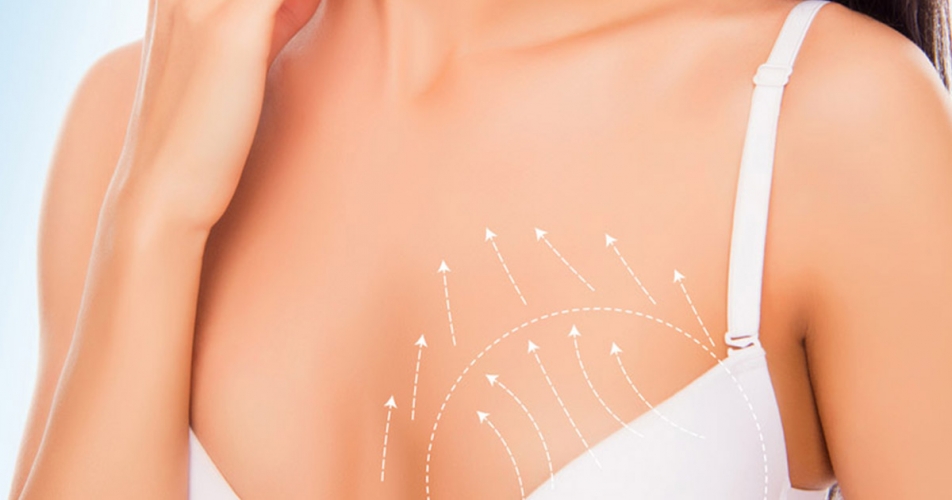Breast Lift

Breast sag (ptosis) is a frequent problem following pregnancy and lactation. It is also a problem that affects women with larger breasts, over time, especially after significant weight loss. Breast ptosis is defined as a drop of the nipple below the level of the fold beneath the breast (inframammary fold). Associated with the drop of the breast is a general softening of the breast and overlying skin, as it has usually been stretched then deflated repeatedly by either breastfeeding, massive weight loss, or both.
Women with breast ptosis are concerned by a number of issues:
- The breasts sagging onto the lower chest or stomach
- Downward pointing nipples
- The enlarged size of the areolas
- Loss of breast firmness
- The associated loss of breast volume from post-lactational involution of the breast
- An alteration of self-confidence, self-image and self-esteem
A breast lift/mastopexy lifts the nipple back on top of the breast and increases breast firmness due to a more compact volume of the breast. The result of this procedure is a rejuvenation of the breast. Correction of the breast ptosis can be associated with a very significant improvement of these problems. Although breasts of any size can be lifted, the results may not be as long-lasting in women with heavier breasts. To achieve an increase in volume however, some women will combine a breast lift with a breast augmentation/enlargement.
Every patient is different, and the technique of surgery will need to be tailored to what is there beforehand. There are a range of procedures available. Some are simpler, less invasive, cheaper (as-a- result- of less complexity) and are able to preserve breastfeeding. This is desirable if the woman has not finished, or hasn’t even started, having her family yet. These procedures also give less scarring, which is far less noticeable. These procedures are also more suitable for smaller to medium – sized breasts.
In general, most larger breasts are likely to require the more extensive, formal breast lift procedure. This has the inverted T “lollipop” scar. Although this usually fades very well over time, most are still slightly visible in the long- term as thin lines. However, despite being visible, the overall improvement in the volume at the correct position, size of the nipples, perkiness of the breasts etc., means that overall the breasts look very attractive, despite the fine scars.
Dr Rita has a preference to employ a special breast lift technique that is more likely to keep the breasts more perky in the long-term, compared to other techniques that can give recurrent significant ptosis within 6 months after the surgery. Whenever possible, this technique is preferred, and is available to Dr Rita’s patients.
The full breast lift procedure is a very similar operation to breast reduction surgery. The major difference is that minimal breast tissue is removed, if at all, in breast lift surgery. Dr Rita endeavors to preserve most of the patient’s own breast tissue, to avoid the placement of implants whenever possible. It is always better in the long-term to keep one’s own tissues, rather than implants. However, where this is not possible, or where the breasts are already too small, the placement of implants, in addition to performing the breast lift, would be recommended.
Contact us for a more personal consultation and recommendations for the procedure that would be right for you.
FAQ
These operations are performed under a general anaesthetic. Some can be carried out as a day case, but many women choose to stay in hospital for a short stay.
Scars are the inevitable result of any invasive surgical procedure. As a specialist breast lift surgeon, Dr Rita will employ a variety of measures to minimise your scarring and to keep your scars as inconspicuous as possible. She will also employ various techniques to address the particular problem at hand, depending on various things such as the current size of the breasts, or the need for implants or not. Dr Rita will also perform a full breast check prior to proceeding with any surgery.
Although all scars will go through a time when they are noticeable due to pinkness and occasionally thickening, most scars will be along natural skin lines and fade with time. In most patients, breast scars heal very well, and fade significantly over about 12 months.
Patients who have this procedure are generally extremely pleased with their result.


